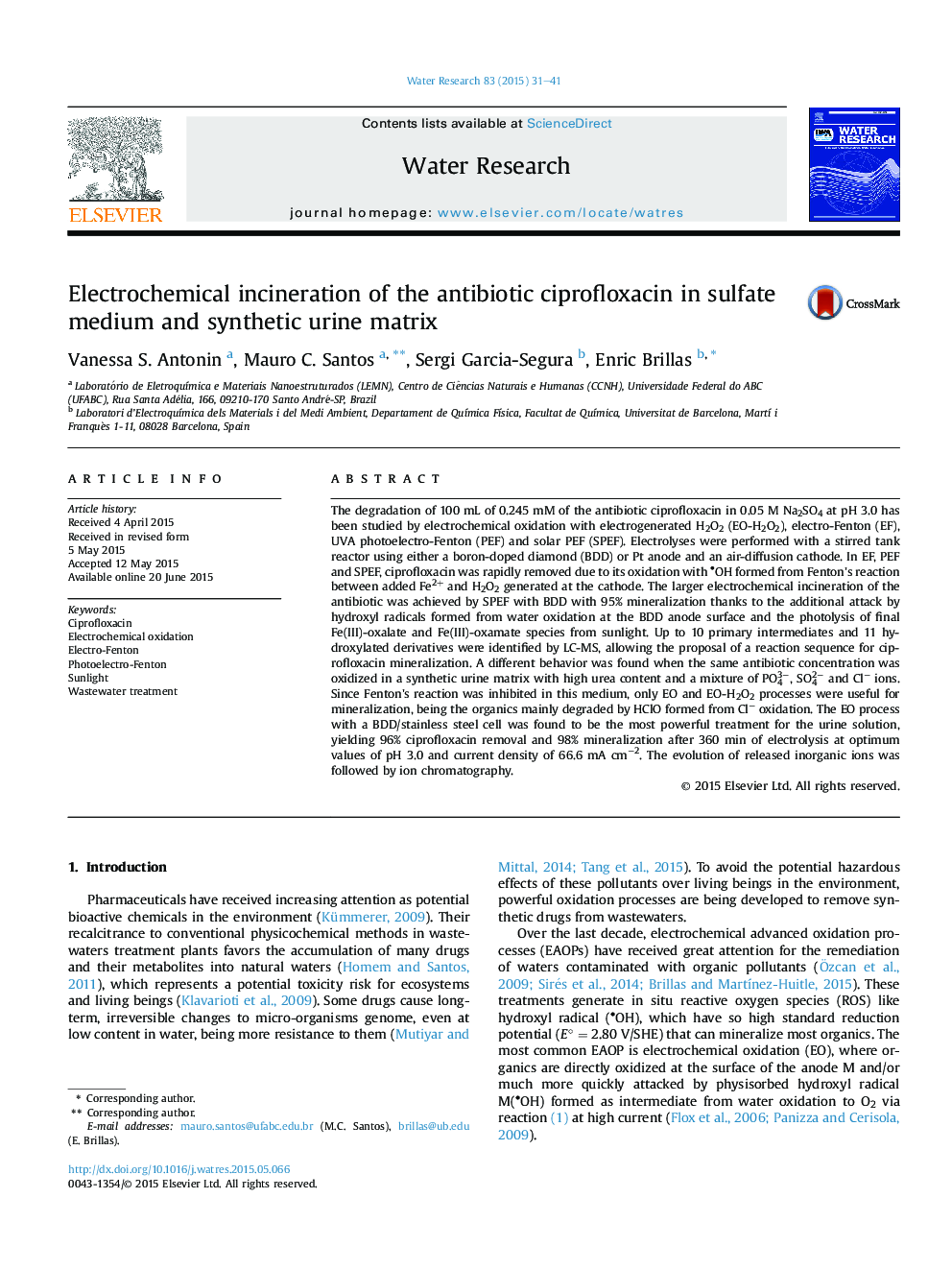| Article ID | Journal | Published Year | Pages | File Type |
|---|---|---|---|---|
| 6365725 | Water Research | 2015 | 11 Pages |
Abstract
The degradation of 100Â mL of 0.245Â mM of the antibiotic ciprofloxacin in 0.05Â M Na2SO4 at pH 3.0 has been studied by electrochemical oxidation with electrogenerated H2O2 (EO-H2O2), electro-Fenton (EF), UVA photoelectro-Fenton (PEF) and solar PEF (SPEF). Electrolyses were performed with a stirred tank reactor using either a boron-doped diamond (BDD) or Pt anode and an air-diffusion cathode. In EF, PEF and SPEF, ciprofloxacin was rapidly removed due to its oxidation with
- OH formed from Fenton's reaction between added Fe2+ and H2O2 generated at the cathode. The larger electrochemical incineration of the antibiotic was achieved by SPEF with BDD with 95% mineralization thanks to the additional attack by hydroxyl radicals formed from water oxidation at the BDD anode surface and the photolysis of final Fe(III)-oxalate and Fe(III)-oxamate species from sunlight. Up to 10 primary intermediates and 11 hydroxylated derivatives were identified by LC-MS, allowing the proposal of a reaction sequence for ciprofloxacin mineralization. A different behavior was found when the same antibiotic concentration was oxidized in a synthetic urine matrix with high urea content and a mixture of PO43â, SO42â and Clâ ions. Since Fenton's reaction was inhibited in this medium, only EO and EO-H2O2 processes were useful for mineralization, being the organics mainly degraded by HClO formed from Clâ oxidation. The EO process with a BDD/stainless steel cell was found to be the most powerful treatment for the urine solution, yielding 96% ciprofloxacin removal and 98% mineralization after 360Â min of electrolysis at optimum values of pH 3.0 and current density of 66.6Â mAÂ cmâ2. The evolution of released inorganic ions was followed by ion chromatography.
- OH formed from Fenton's reaction between added Fe2+ and H2O2 generated at the cathode. The larger electrochemical incineration of the antibiotic was achieved by SPEF with BDD with 95% mineralization thanks to the additional attack by hydroxyl radicals formed from water oxidation at the BDD anode surface and the photolysis of final Fe(III)-oxalate and Fe(III)-oxamate species from sunlight. Up to 10 primary intermediates and 11 hydroxylated derivatives were identified by LC-MS, allowing the proposal of a reaction sequence for ciprofloxacin mineralization. A different behavior was found when the same antibiotic concentration was oxidized in a synthetic urine matrix with high urea content and a mixture of PO43â, SO42â and Clâ ions. Since Fenton's reaction was inhibited in this medium, only EO and EO-H2O2 processes were useful for mineralization, being the organics mainly degraded by HClO formed from Clâ oxidation. The EO process with a BDD/stainless steel cell was found to be the most powerful treatment for the urine solution, yielding 96% ciprofloxacin removal and 98% mineralization after 360Â min of electrolysis at optimum values of pH 3.0 and current density of 66.6Â mAÂ cmâ2. The evolution of released inorganic ions was followed by ion chromatography.
Keywords
Related Topics
Physical Sciences and Engineering
Earth and Planetary Sciences
Earth-Surface Processes
Authors
Vanessa S. Antonin, Mauro C. Santos, Sergi Garcia-Segura, Enric Brillas,
